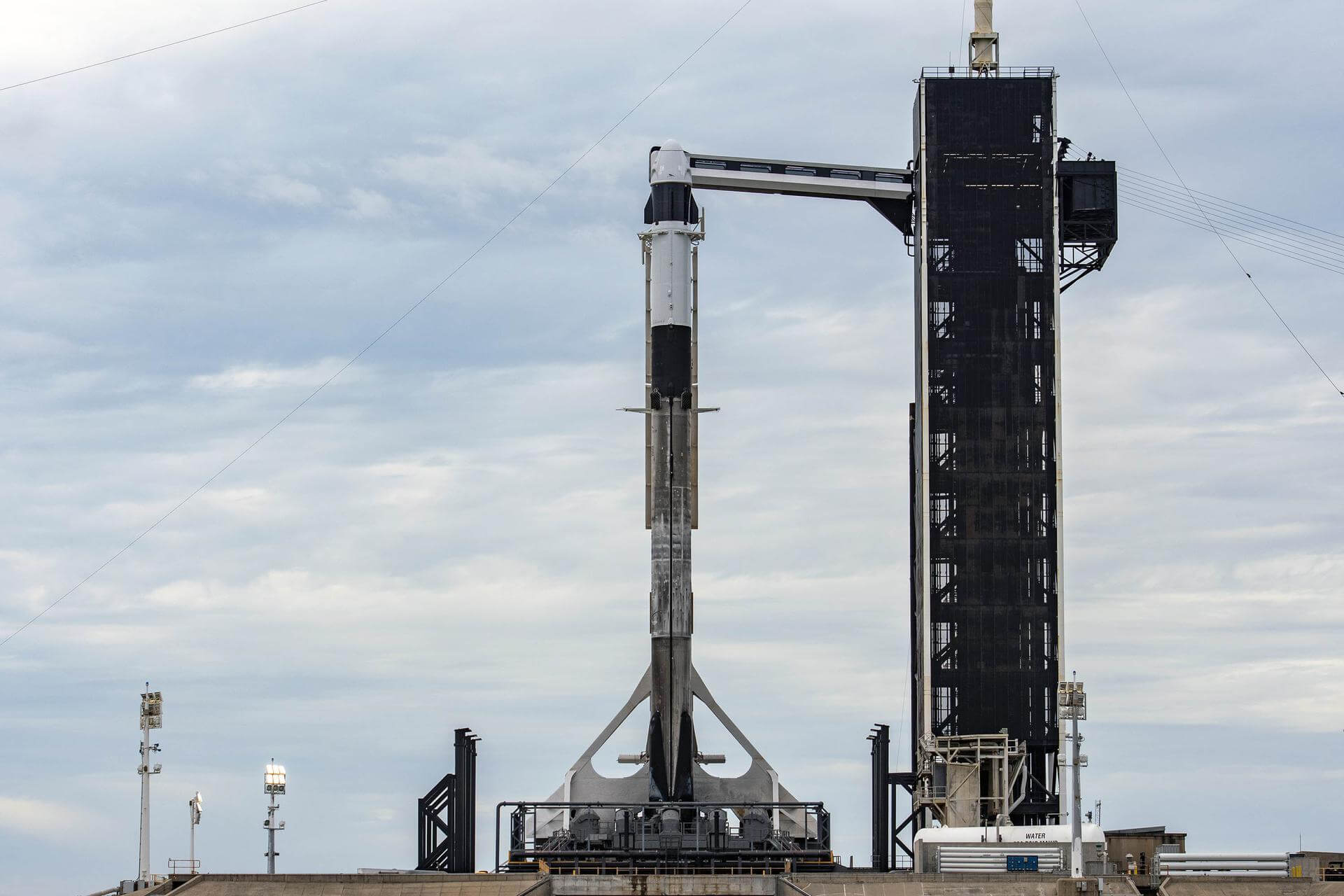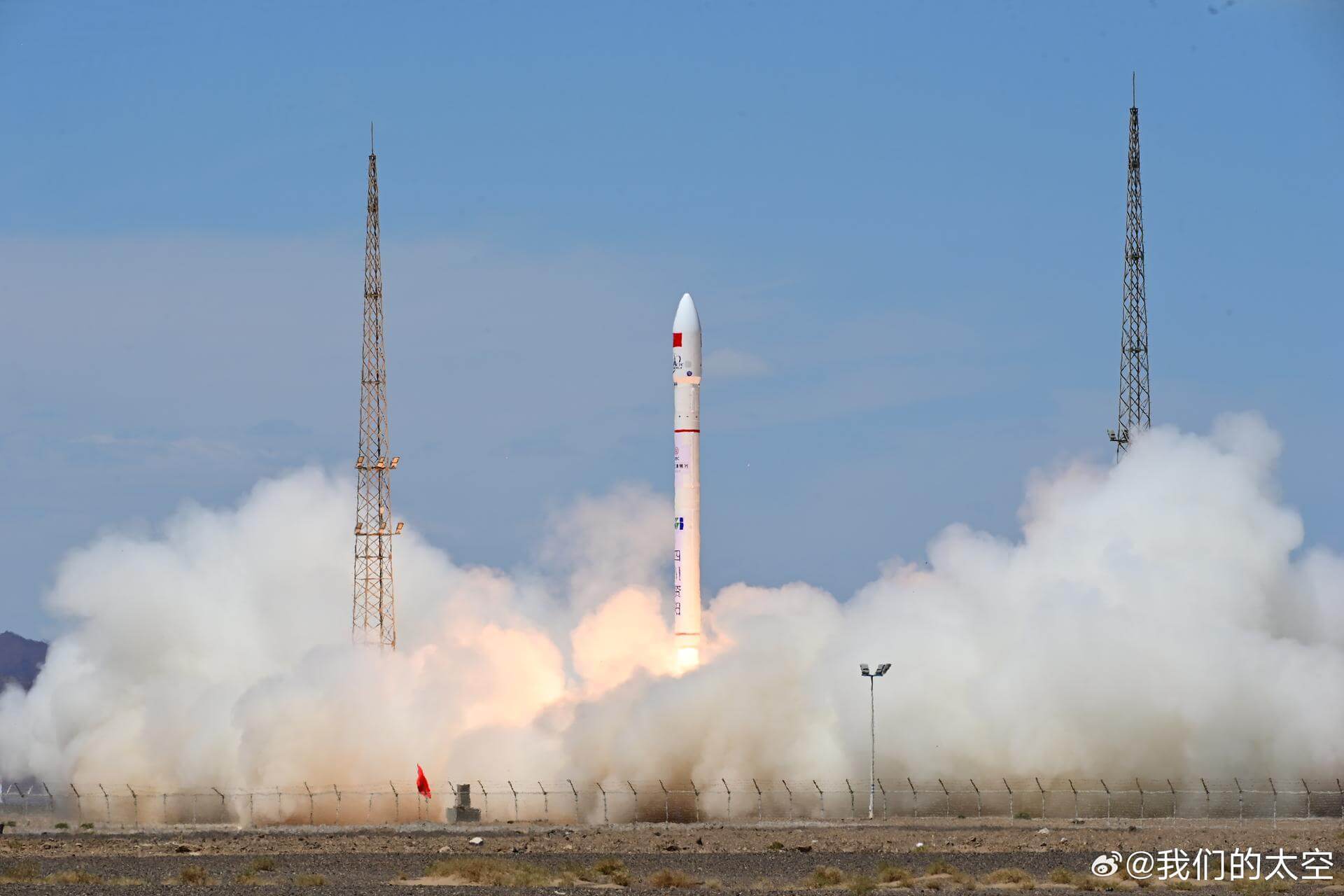· space brief · 7 min read
Space Brief 7 May 2025
Today's briefing focuses on key developments in military space activities, technological advancements, and strategic challenges faced by the U.S. in space dominance. Notably, the Space Force is expanding its missile warning capabilities, and significant funding discussions are underway.

📄Top Stories
The U.S. Space Force is making waves with investments in missile warning systems and technology advancements, while its leadership campaigns for increased funding. Meanwhile, the Pentagon hits a milestone in hypersonic vehicle testing, breaking Mach 5. The strategic position of the U.S. in low Earth orbit faces scrutiny, raising concerns about future economic and defense leadership.
📰Detailed Coverage
Space Force Chief Calls for Increased Funding
The U.S. Space Force is appealing for more resources to meet growing demands from lawmakers. The service’s chief, Gen. Saltzman, addressed a House panel, emphasizing that current funding levels are insufficient for the wide array of tasks the Space Force is expected to undertake.
This plea highlights the need for enhanced capabilities in space operations and defense, crucial for maintaining and securing U.S. assets in orbit amidst increasing global competition. Satellite tracking capabilities, like those offered by our web app, become increasingly vital in this landscape.
Read the full story: SpaceNews
Space Force Awards Missile-Warning Contracts
The Space Force has awarded contracts for the development of a new missile-warning ground system as part of its Future Operationally Resilient Ground Evolution (FORGE) program. This initiative aims to establish a government-owned ground system capable of commanding and controlling missile warning satellites.
With this effort, the Space Force is augmenting its surveillance capabilities, which are critical in detecting potential threats from orbital spacecraft and ensuring national security. The program’s progress showcases significant advancements in satellite control technologies.
Read the full story: SpaceNews
Pentagon Achieves Hypersonic Breakthrough
The Pentagon has achieved a major milestone as its Stratolaunch reusable vehicle successfully broke Mach 5. The vehicle, launched from the unique Roc carrier aircraft, represents a significant leap in hypersonic capabilities for military applications.
This advancement marks a pivotal step in the race for hypersonic technology, offering strategic military advantages and shaping future defense tactics in space and Earth-based operations. Such developments also underscore the importance of monitoring and tracking high-velocity objects in space.
Read the full story: SpaceNews
U.S. Space Force Expands Missile Warning Network
The next generation Space Based Infrared System (SBIRS) Survivable Endurable Evolution (S2E2) system has been officially accepted for operational use by the U.S. Space Force. This acceptance bolsters the country’s missile warning network, enhancing its detection and tracking capabilities.
Advancements like the S2E2 system are critical in maintaining robust space defense infrastructures, essential for timely responses to potential threats from space. Technologies like these emphasize the need for comprehensive satellite tracking solutions.
Read the full story: SpaceWar
Risks to U.S. Leadership in Low Earth Orbit
A critical analysis warns that the United States is at risk of losing its economic and defense leadership in low Earth orbit (LEO). This stems from challenges in sustaining a strong presence in LEO, where commercial and military interests are increasingly intertwined.
The strategic role of LEO is vital for both commercial ventures and national defense, making continuous investment and innovation crucial. Ensuring leadership in this sphere is key to maintaining competitive advantages globally, further underlining the importance of satellite monitoring capabilities.
Read the full story: SpaceNews
Terran Orbital Joins Major USSF Tech Program
Terran Orbital Corporation has joined a select group in the U.S. Space Force’s Space Test Experiments Platform (STEP) 2.0, a $237 million program over 10 years. This initiative is designed to expedite the deployment and validation of space technologies crucial for national security.
Participation in such programs demonstrates Terran Orbital’s expanding role in pioneering space technologies and highlights the growing collaboration between private companies and military entities in advancing strategic space capabilities.
Read the full story: SpaceWar
🛰️Satellite Spotlight
- Satellite Name: TAUSAT-2
- NORAD ID: 55073
- Launch Date: January 3, 2023
- Mission: The TAUSAT-2 satellite focuses on technology demonstration and education, showcasing advancements in space technology while also serving as a learning tool.
- Orbit: LEO (Low Earth Orbit)
- Operator: TAU (Tel Aviv University)
- Fun Fact: TAUSAT-2 is designed as a 3U CubeSat, which allows for a compact and efficient use of space for educational and technological research.
Track this satellite in real-time on our web app: Track TAUSAT-2
🌌Space Weather
Current space weather shows Enhanced solar wind (545 km/s).
R0 - S0 - G0
Next 24 Hours: Forecasts indicate no risk of radio blackouts or solar radiation storms in the upcoming day. However, there is a likelihood of G1 (Minor) geomagnetic conditions on 09 May due to the influence of a negative polarity coronal hole high-speed stream (CH HSS). For satellite operators and communication users, the expected geomagnetic activity could introduce minor disruptions to high-frequency radio communications, but systems are likely to function without significant issues. Ground-based radars and telescopes may also observe minor fluctuations, but these should not hinder normal operations. Additionally, the drag impacts on Low Earth Orbit (LEO) satellites may increase slightly during this timeframe; operators should monitor their satellite’s orbital parameters.
Beyond: Looking ahead to the period from 05 May to 31 May, solar activity is expected to remain predominantly low, with some chances for M-class flare activity. There are no proton events anticipated at geosynchronous orbit, which is good news for satellite operators. However, the greater than 2 MeV electron flux at geosynchronous orbit is likely to increase to high levels between 05-12 May and 29-31 May, which may necessitate enhanced protective measures for sensitive electronics on satellites during these times. Geomagnetic activity may reach G1 (Minor) storm levels on 18 May and 29-31 May due to further influences from negative polarity coronal holes. Active conditions are expected intermittently throughout May, suggesting that satellite operators should remain vigilant, as elevated geomagnetic activity could lead to minor disruptions in communication and navigation systems. Overall, quiet to unsettled conditions are expected for the remainder of the month.
Upcoming Space Launches
May 10
-
SpaceX Falcon 9:
- Starlink Group 15-3 from Vandenberg Space Force Base (00:01 UTC) A batch of 26 satellites for the Starlink mega-constellation - SpaceX’s project for space-based Internet communication system.
-
SpaceX Falcon 9:
- Starlink Group 6-91 from Cape Canaveral Space Force Station (06:28 UTC) A batch of satellites for the Starlink mega-constellation - SpaceX’s project for space-based Internet communication system.
May 11
- SpaceX Falcon 9:
- Starlink Group 6-83 from Kennedy Space Center (04:24 UTC) A batch of satellites for the Starlink mega-constellation - SpaceX’s project for space-based Internet communication system.
May 13
- SpaceX Falcon 9:
- Starlink Group 15-4 from Vandenberg Space Force Base (00:00 UTC) A batch of satellites for the Starlink mega-constellation - SpaceX’s project for space-based Internet communication system.
May 15
- Gilmour Space Technologies Eris-1:
- Maiden Flight from Bowen Orbital Spaceport (00:00 UTC) Maiden flight of Gilmour Space’s orbital launch vehicle Eris.
May 17
- Rocket Lab Electron:
- The Sea God Sees (iQPS Launch 2) from Rocket Lab Launch Complex 1, Mahia Peninsula, New Zealand (08:15 UTC) Synthetic aperture radar Earth observation satellite for Japanese Earth imaging company iQPS.
May 18
- ISRO PSLV-XL:
- EOS-09 (RISAT-1B) from Satish Dhawan Space Centre, India (00:00 UTC) RISAT-1B is the third in the series of radar imaging RISAT-1 satellites of ISRO. It provides all-weather as well as day-and-night SAR observation capability for applications such as agriculture, forestry, soil moisture, geology, sea ice, coastal monitoring, object identification, and flood monitoring, in addition to military surveillance.
May 29
- SpaceX Falcon 9:
- Axiom Space Mission 4 from Kennedy Space Center (17:03 UTC) This is a Crew Dragon flight for the private company Axiom Space. The mission will carry a professionally trained commander alongside three private astronauts to and from the International Space Station. This crew will stay aboard the space station for at least eight days.
May 31
- SpaceX Falcon 9:
- GPS III SV08 from Cape Canaveral Space Force Station (00:00 UTC) Eighth of ten GPS III missions.
Note: Launch dates and times are subject to change due to technical or weather considerations.

Maurice Stellarski




